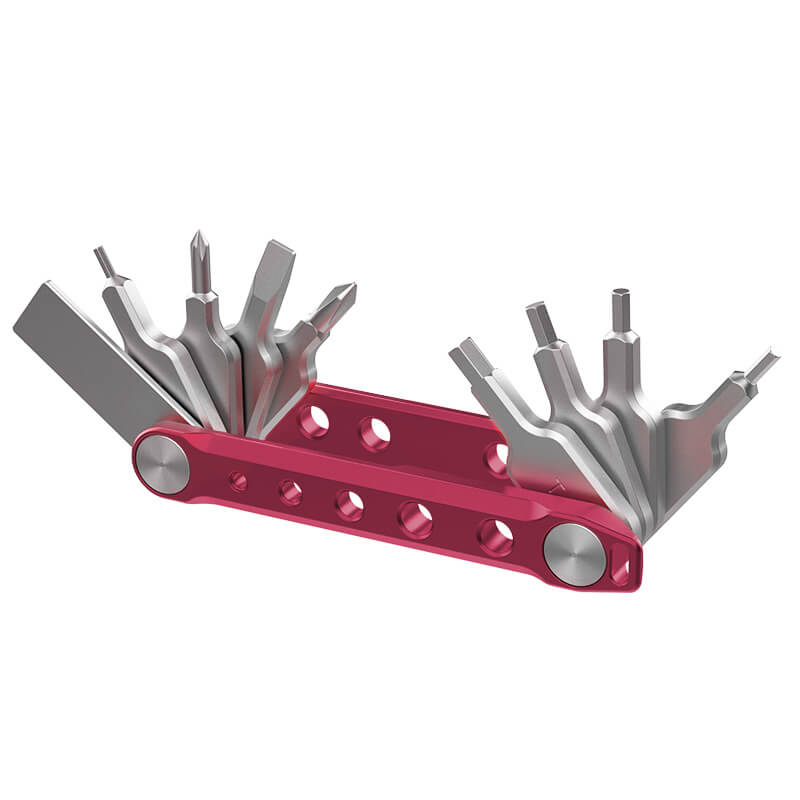A tripod is an essential tool that provides a steady base for your camera, reducing camera shake and allowing for sharper, clearer photos. Choosing the right tripod is a crucial decision for any photographer. In this blog post, we'll offer you guidance on how to ensure the compatibility between tripod and the camera, and share some practical tips to pick the ideal tripod.

Check the Tripod Mount Compatibility
Most cameras and tripods use a standard mount size, which is the 1/4-inch-20 screw thread. This size fits the majority of consumer cameras, including DSLRs, mirrorless cameras, and even some compact cameras. However, larger professional cameras or heavy-duty camcorders might use a 3/8-inch thread. This is more common in higher-end equipment that requires extra stability due to their weight and size. It's very important to verify the compatibility between them to ensure a pleasing operation process. Here are two tips you can refer to.
- Camera Specifications: Look at the bottom of your camera where the tripod attaches. You should see a threaded hole. Check your camera's manual or specifications sheet to confirm the thread size (usually listed in the technical specifications section).
- Tripod Head Specifications: Similarly, check the specifications of the tripod you're interested in. The mounting screw size will be listed in the product description or manual.
Ensure Adequate Weight Capacity
One of the crucial factors to consider when choosing a tripod is its weight capacity. Your tripod must support not only the weight of your camera but also any additional accessories you might use, such as lenses, flashes, or battery grips. Every tripod has a specified maximum load capacity, which is the total weight it can safely support without compromising stability or performance. This figure is usually listed in the tripod's specifications. When calculating the total weight, remember to include:
- Camera Body: The primary component.
- Lens: Different lenses can vary significantly in weight; telephoto lenses are typically heavier than standard ones.
- Accessories: External flashes, battery grips, or microphones can add extra weight.
- Other Add-ons: Filters, external monitors, or any other gear you attach to your camera.

Assess Tripod Head Compatibility
The type of tripod head you choose is just as important as the tripod legs themselves. Different tripod heads (ball head, pan-tilt head, gimbal head, etc.) offer varying levels of control, stability, and ease of use, which can significantly impact your photography experience. To make sure the tripod head suits your needs and is compatible with your camera:
- Weight Support: Confirm that the tripod head can support the weight of your camera and any additional gear. This is particularly important for larger setups with heavy lenses.
- Mounting Plate: Check if the mounting plate (the piece that attaches to the bottom of your camera) is compatible with your camera model. Many tripod heads come with Arca-Swiss style plates, which are widely compatible, but it's always good to verify.
- Replaceability and Upgradability: If your tripod comes with a removable head, ensure it can be replaced or upgraded as needed. This flexibility allows you to customize your setup to better suit changing needs or preferences.
Consider the Height and Stability
Choosing the right tripod involves more than just ensuring your camera fits; you also need to consider how high the tripod extends, its stability at full extension, and whether it's convenient to carry around. A tripod that meets all these criteria will significantly enhance your photography experience.
Assessing Height
- Maximum Height: The tripod should extend to a height that allows you to shoot comfortably without bending or straining. This is especially important if you'll be using it for extended periods.
- Ideal Height: Typically, a tripod should reach at least eye level when fully extended, including the height of your camera on top.
- Minimum Height: Check how low the tripod can go as well. Low-angle shots or macro photography often require the tripod to be close to the ground.

Ensuring Stability
Stability is crucial, particularly when shooting in windy conditions or on uneven surfaces. A stable tripod prevents camera shake, resulting in sharper images.
- Leg Design: Look for tripods with sturdy leg locks and robust construction. Features like spiked feet can add extra stability on rough terrain.
- Real-Life Tip: Tripods with thicker legs and fewer leg sections tend to be more stable but may weigh more.
- Center Column: Some tripods have a center column that extends to increase height. While useful, extending the center column can sometimes reduce stability. Use it sparingly and ensure the tripod remains steady.
Practical Tips for Choosing the Right Tripod
Here are some practical tips to help you make the best choice for your needs:
Read Reviews and Comparisons Carefully
Before you buy a tripod, take some time to read reviews and comparisons from other photographers who have used the ones you're considering. This can provide valuable insights into the real-world performance and durability of different models, as well as highlight any potential issues or limitations. Professional reviews and comparisons can also help you narrow down your choices based on your specific needs and budget.
Take a Try as You Can
If possible, visit a local camera store or rental house to get hands-on experience with different tripods before making a purchase. This will enable you to evaluate for yourself how sturdy, user-friendly, and steady they feel. Pay attention to things like how smoothly the head moves, how easy it is to extend and collapse the legs, and how heavy and balanced the whole setup feels.
Think about Future Compatibility
It's important to future-proof your tripod purchase when making an investment so that it can handle any future additions to your camera or lens collection. To allow for growth and equipment adaptability, choose a tripod that can support more weight than what your current setup can handle. Furthermore take into account whether the tripod head is compatible with various camera and lens mounts and whether accessories like L-brackets and quick-release plates are available.
Finding Your Perfect Tripod Match!
Longer exposures, more accurate composition, and less physical strain during prolonged shooting sessions are just a few advantages of using a tripod. A well-chosen tripod can also help you achieve consistent results and expand your creative possibilities. As you begin using your new tripod, don't be afraid to experiment with different setups and techniques to find what works best for you. With some experience and training, you'll be able to create a workflow that makes the most out of your tripod and enables you to take amazing pictures in a range of shooting scenarios!






